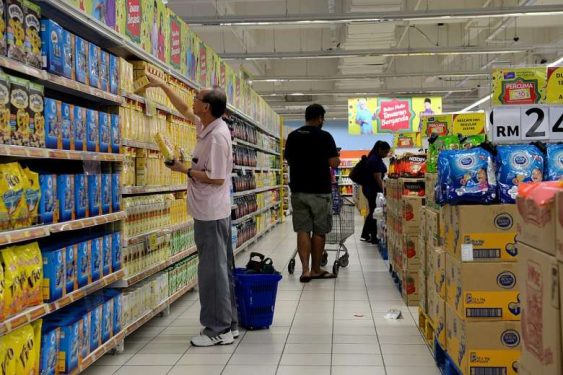CONSTANT RAIN in the last few days has inundated and destroyed farms, according to farmers, who have warned consumers to expect a vegetable shortage in the market.
The Federation of Vegetable Growers Associations president Lim Ser Kwee revealed that over 1,000 metric tonnes of vegetables had indeed been damaged at farms in the southern peninsula, with damages totaling over RM10 mil.
“In Johor, the floodwaters rose over night and swamped several farms. Farmers in the state have grumbled about their water pumps being washed away while their machinery was submerged in the river,” The Star reported him as saying yesterday (March 1).
Lim added that the reported flooded roads, which have affected transport vehicles entering the farms, have caused supply chaos in the vegetable wholesale market.
He also stated that farmers also incurred more losses as they were not able to salvage their pesticides and fertilisers.
The federation secretary-general Chay Ee Mong also warned of a potential price increase if the weather pattern prolonged.
“It’s hard to predict this round of the rainy season. Even in Cameron Highlands, there had been several days of strong winds and more than 30 hours of continuous drizzle.
“This will certainly affect highland vegetables, delaying their growth and harvest cycles. Their yields will drop,” said Chay.
According to Chay, there will be a shortage of vegetables in the upcoming month, which will increase the cost.
The federation also acknowledged complaints made by the Consumers Association of Penang (CAP) over unjustified price rises for vegetables.
After the Chinese New Year holiday season in mid-February, prices began to decline, with certain crops seeing price drops of more than 50%.
“For example, long beans dropped from RM10 to RM2 per kg, cucumber from RM5 to RM2 per kg, sawi (mustard leaves) and kangkung (water spinach) were all less than RM2 per kg.
“Vegetable prices fluctuate according to the supply and demand situation in the wholesale markets and the quality of vegetables,” the secretary-general noted.
Moreover, Chay pointed out that the preceding phase of high costs was brought on by unusual weather patterns with a lot of rain between late last year and early this year.
“This differs from the year before, where we had a good period of sunshine before the Chinese New Year, which helped with the growth and gave farmers good yields. Hence, prices were stable.
“When there is little sun during rainy weather, vegetables grow much more slowly because less photosynthesis takes place, affecting yields and supply.
“Consumers should understand that the weather patterns, vegetable prices and production are closely related,” Chay said.
Irrespective of losses, Lim expected that farmers would continue revitalising the soil and planting on a lesser scale despite the predicted rain.
Despite the fact that vegetable prices periodically change, Lim claimed that farmers are constantly having to contend with higher production expenses.
Lim urged that the government put together a plan for federal subsidies for vegetables.
He emphasised that all state governments ought to have a methodical method for allocating money for flood relief and other forms of farming subsidies to vegetable producers across the nation. — March 2, 2023









